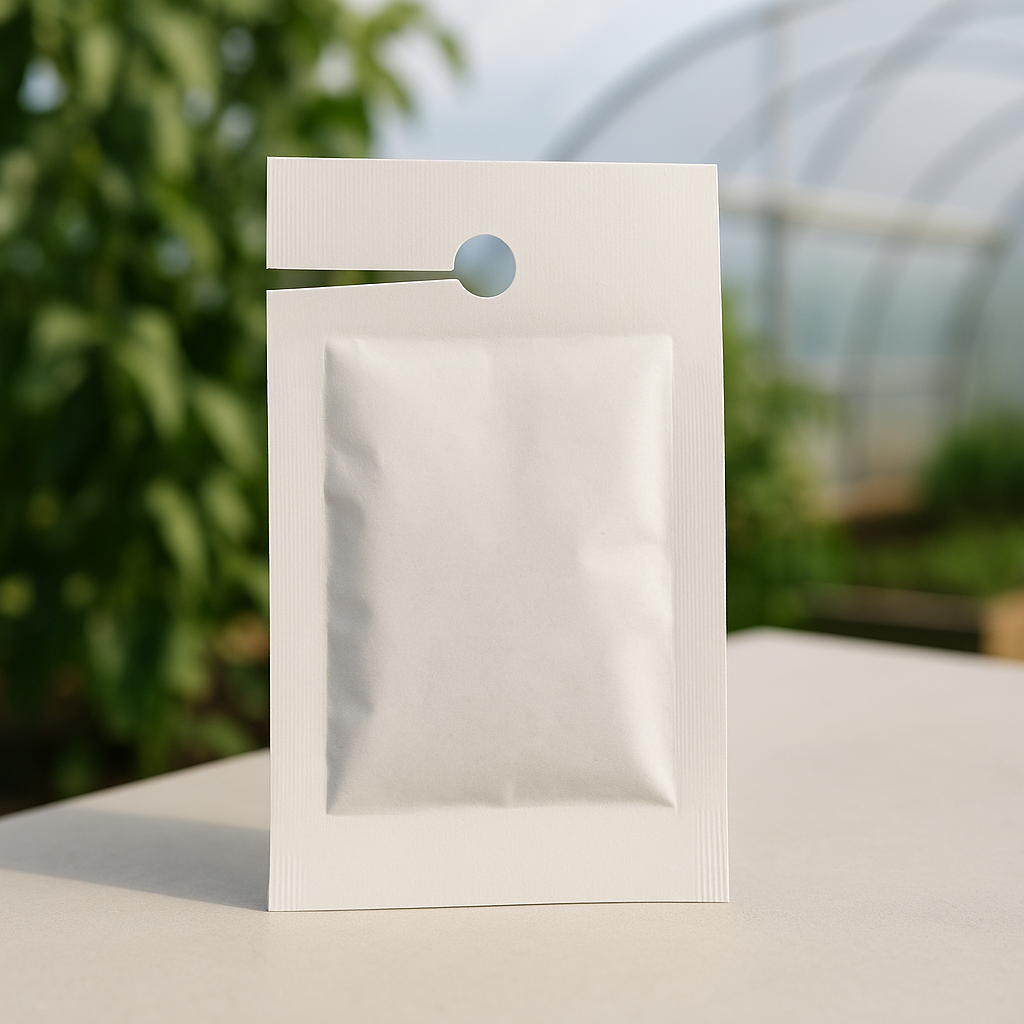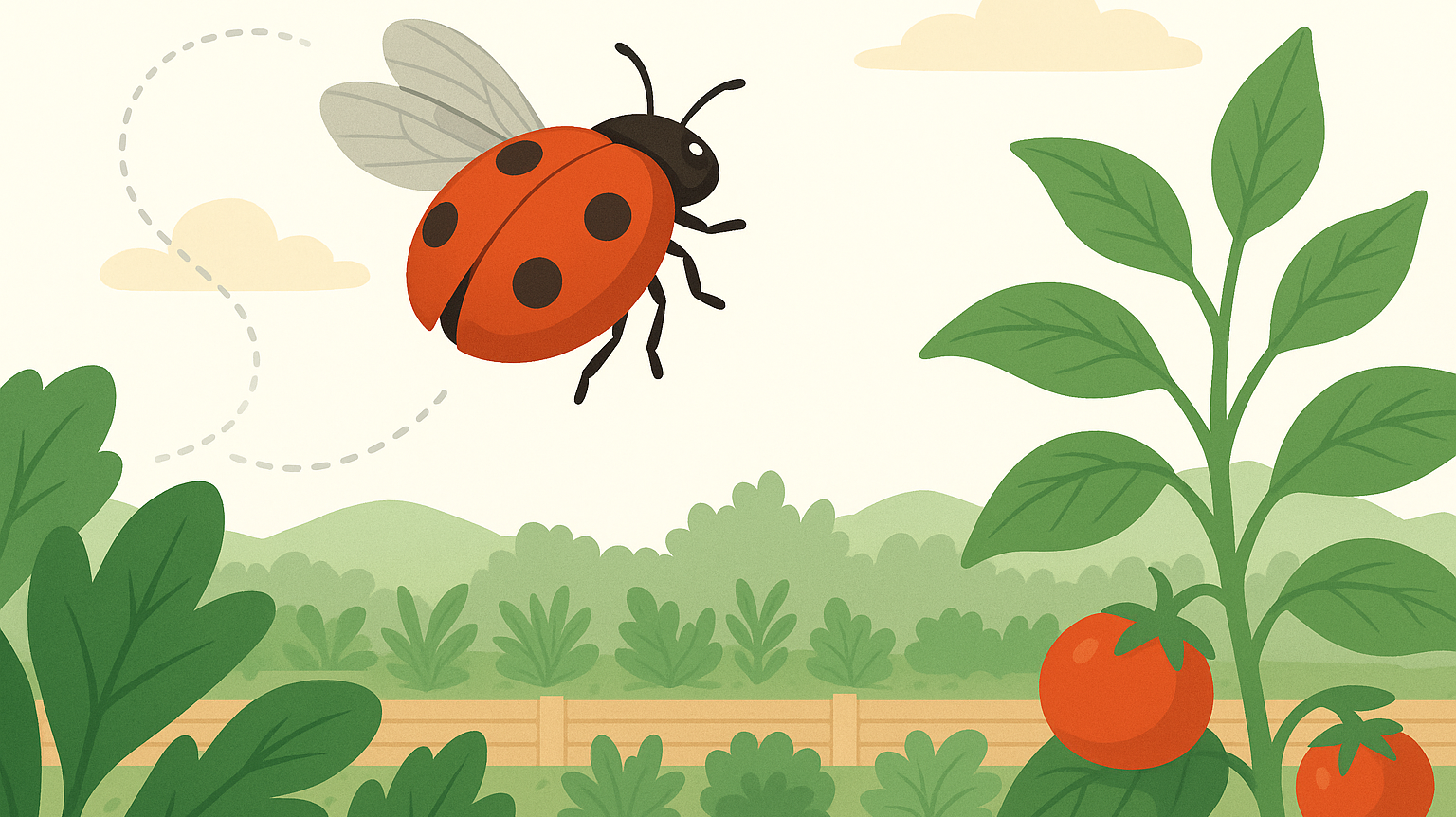How Do You Keep Spider Mites And Thrips From Coming Back?
You cleared the thrips. The webbing’s gone. That twisted new leaf finally unfurled normally.
Now what?
You’ve seen how fast spider mites, broad mites, russet mites, and thrips can spiral out of control—and you don’t want to go through that again. These sachets are how you stay ahead of it.
Biological Pest Prevention for Spider Mites, Broad Mites, Russet Mites, Thrips, and More
These sachets release live predatory mites gradually over 3–5 weeks to prevent pests from establishing in the first place. No sprays. No mixing. No guesswork.
If you’ve ever dealt with an infestation—or just want to avoid one—this is your slow-release insurance.
Each sachet contains four species of beneficial mites, selected to cover multiple pests, microclimates, and plant types. The mites emerge over time, spread throughout your foliage, and quietly take out pests while they’re still in egg or larval form.
You won’t see the mites. You also won’t see the pests. That’s the point.
What It Prevents
| Pest | Targeted Stage | Common Hosts |
|---|---|---|
| Thrips | Eggs and larvae | Syngonium, Philodendron, Calathea |
| Broad mites | All stages | Anthurium, African violets, Peperomia |
| Russet mites | All stages | Hoyas, cannabis, trailing aroids |
| Spider mites (T. urticae, T. pacificus) | All stages | Alocasia, citrus, ferns |
| Whiteflies | Immatures | Tomatoes, herbs, tropicals |
| Cyclamen mites | All stages | Begonias, ferns, curled foliage |
| Other soft-bodied mites | Varies | Common in mixed indoor collections |
This mix is especially helpful if:
-
You aren’t sure what pests you’ll be dealing with
-
You’ve cleared an infestation and want protection
-
You grow in a warm, humid space with lots of foliage
-
You want to stop spraying and try natural prevention instead
What's Inside
Each sachet contains a balanced mix of four compatible predatory mite species:
-
Amblyseius swirskii – Targets thrips (eggs + larvae), whiteflies, broad mites, russet mites
-
Amblyseius cucumeris – Thrips larvae, broad mites, cyclamen mites
-
Amblyseius andersoni – Spider mites, broad mites, cyclamen mites; climate-flexible
-
Phytoseiulus persimilis – Specialist spider mite predator (Tetranychus spp.)
Each species plays a different role—some dominate in heat, others tolerate cold. Some feed on eggs, others on mobile juveniles. Together, they give you coverage across pests before damage is visible.
How It Works
Sachets are designed for biological slow-release. Each one contains a mix of:
-
Adult predatory mites
-
Juveniles
-
Eggs
-
A food source (bran + supplemental feed)
Here’s what happens:
-
Mites exit the sachet gradually through the vent
-
They crawl onto leaves and stems, seeking pest eggs and larvae
-
Adults feed and reproduce
-
New generations emerge and continue hunting
-
Coverage lasts 3–5 weeks depending on temperature and humidity
No spraying. No reapplication during the active release period.
How to Use
| Setup Type | Suggested Use |
|---|---|
| Houseplants | 1 sachet per plant |
| Grow tents or shelves | 1 sachet every 2–3 feet |
| Dense canopies or greenhouses | 1 sachet per cluster or per square foot |
| After bottle treatment | Begin sachets 5–7 days later |
| Ongoing protection | Replace every 3–5 weeks |
-
Do not open the sachets. Mites exit naturally through the release hole.
-
Hang sachets near foliage, but above the watering line—do not soak.
-
Works under both grow lights and natural light.
Best Conditions for Success
| Factor | Ideal Range |
|---|---|
| Temperature | 70–85°F |
| Humidity | 60%+ (especially for persimilis egg hatch) |
| Light | Effective under artificial or natural lighting |
| Airflow | Moderate is fine; avoid blasting fans on sachets |
If your environment is dry, mist near (not on) plants or use a humidifier to improve mite emergence and reproduction.
Pro Tips
-
Start early. Don’t wait for visible pest symptoms—these are for prevention.
-
Pair with Good Bug Diet if you’re using sachets preventatively in low-pest conditions.
-
Use sachets after bottles to maintain control after knockdown.
-
Avoid contact sprays. Even organic ones can harm beneficial mites.
-
Stay on schedule. Especially during spring, summer, and early fall.
Safe for Indoor and Edible Use
-
Non-toxic
-
Zero re-entry interval
-
Pet- and pollinator-safe
-
Compatible with organic growing and IPM systems
-
Won’t harm soil microbes, fungi, or beneficial insects
-
Invisible to the eye and residue-free
Shipping & Storage
-
Ships 2-Day with tracking
-
Use on arrival for best results
-
Store up to 48 hours at 50°F if delayed
-
Do not freeze or leave in hot, dry conditions
FAQ
How does the Live Guarantee work?
We know how important it is for your mites to arrive healthy and ready to work. That’s why we offer a live arrival guarantee—with flexible options depending on when we hear from you:
- Let us know within 24 hours of delivery: We’ll gladly send a free replacement shipment.
- Let us know within 2–3 days of delivery: We can offer store credit to make things right.
- After 3 days from delivery: Because these are living organisms, we’re not able to offer replacements or credit beyond that window. By then, it’s harder to know what went wrong or whether shipping conditions were a factor.
We truly want your mites to succeed—so please open your package as soon as it arrives and check on them. If something doesn’t look right, don’t wait—reach out and we’ll take care of you.
Where are you located?
We have a number of different locations in NJ, Maine and Oregon. While we'd love to have you, we are not currently open to the public.
Can I call you?
We get it. Sometimes it's easier to talk to someone, and on a case by case basis we can try to figure it out. Unfortunately though, we're really not able to take calls—FGMN is a small nursery, and we're usually elbows-deep in plants or packing boxes. To make sure nothing gets missed (and everyone gets a timely reply), we keep all communication in writing.
Feel free to message us at info@fgmnnursery.com. We mostly respond quickly, but every once in awhile replies may take a day. Do follow-up if you don't hear in that time. We're human, we miss an email here or there.
Too Many Options?
We get it. Try our mite/insect matchmaking quiz and instantly get matched to the solutions you may need.
Our Live Delivery Guarantee
We stand behind every leaf and every mite. If your plant or predatory insects don’t arrive alive on the first delivery attempt, we’ll make it right.
Here’s what you need to know:
- Email us at info@fgmnnursery.com within 24 hours of delivery
- Include clear photos of the item and the shipping label
- Someone must be available to receive the package—plants and bugs don’t do well sitting in the sun, a mailbox, or the back of a delivery truck
For plants, we offer store credit if something goes wrong.
For predatory mites and beneficial insects, you’ll have the choice of a replacement shipment or store credit.
If you contact us after the 24-hour window, we may still be able to help—just know it’s handled case by case.
We pack with care, insulate when needed, and check the weather before shipping. But once it’s in transit, the fastest way to protect your order is to open it right away.
Mite Matters
The Hidden Weather That Shapes Plant and Predator Life
Invisible weather shapes every growing space. Warm air pools under lights, cool air settles near the floor, and in between, tiny predators decide where they’ll thrive. Learn how microclimates influence the balance between plants, pests, and the mites that keep them in check.
If Ladybugs Are Just Going to Fly Away, Why Use Them?
Most ladybugs don’t fly off out of spite — they leave when the environment isn’t right. Learn how temperature, humidity, and shelter affect whether they settle or scatter, and how to create the ideal setup that keeps them working where you need them most.
Where Did My Predatory Mites Go?
Released predatory mites but can’t see them anymore? Don’t panic. Their invisibility is exactly what makes them effective. Learn why they vanish, how they hunt pests out of sight, and why reapplying keeps your plants protected.







